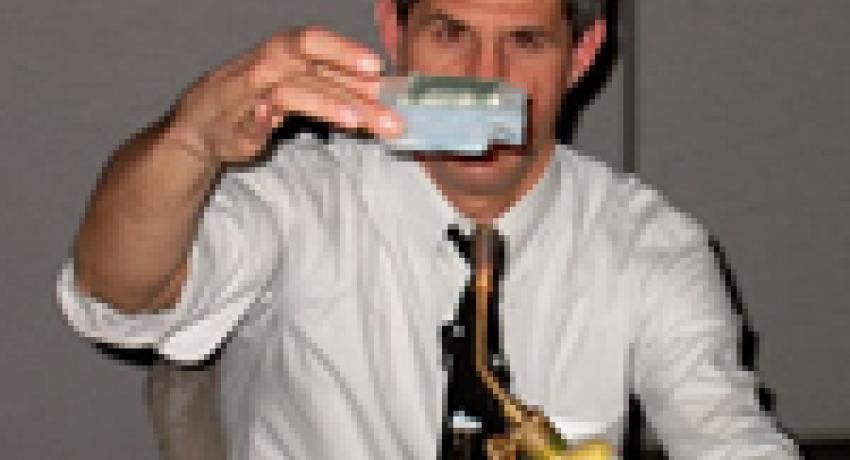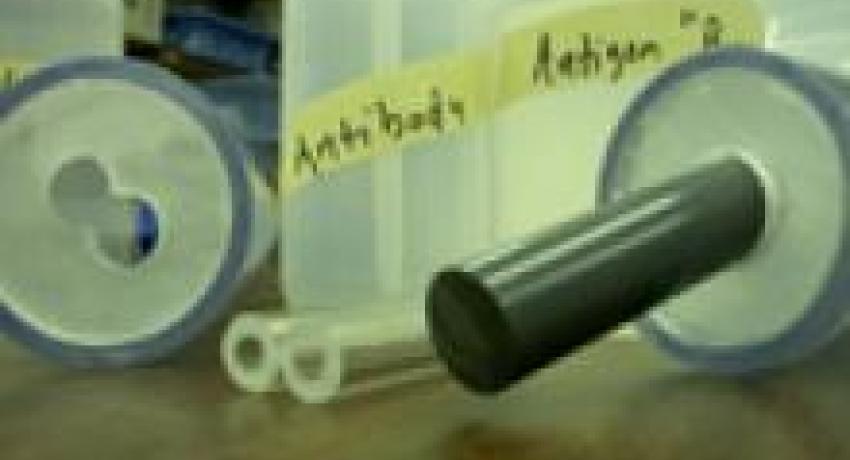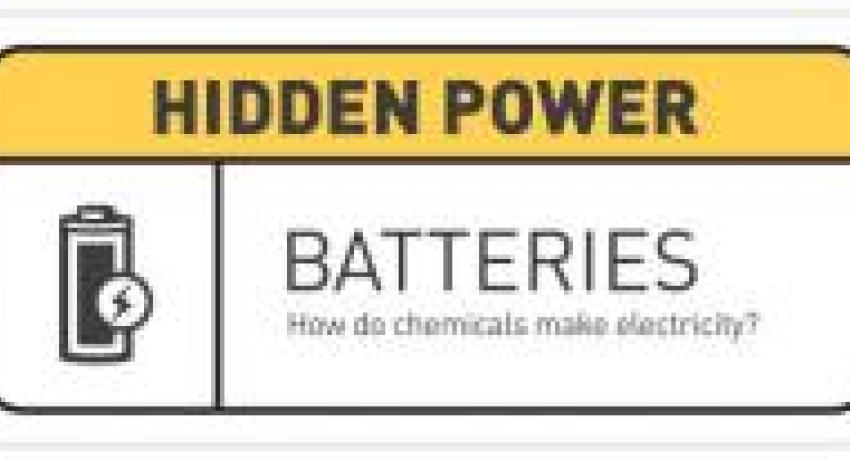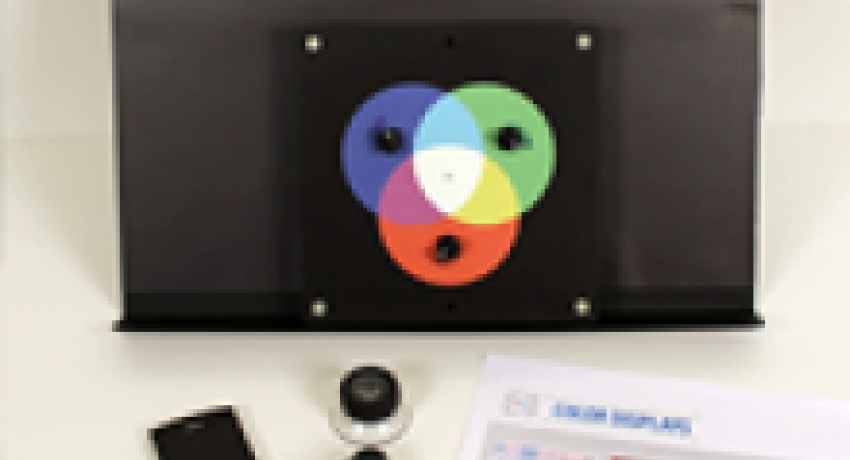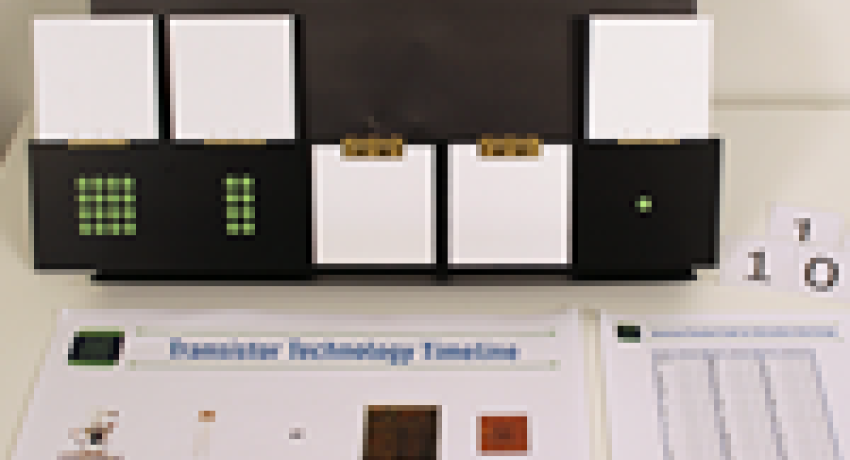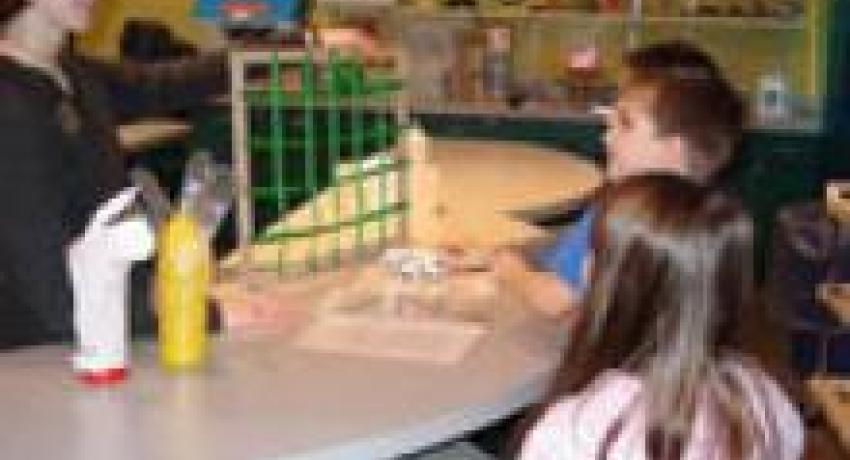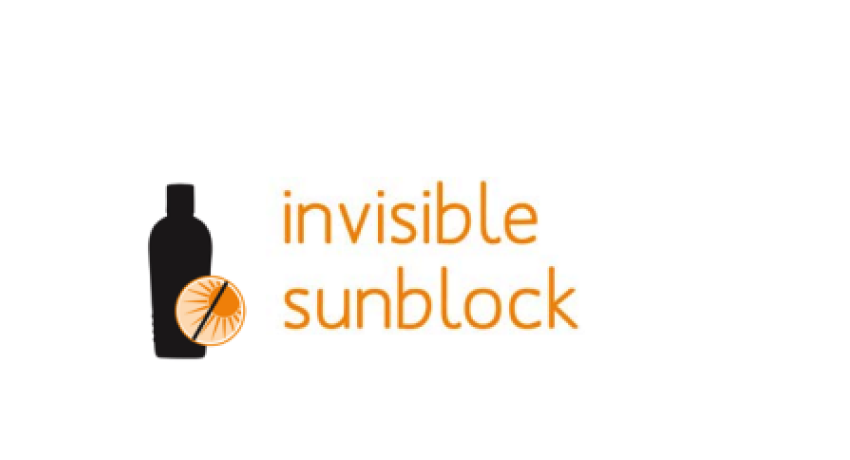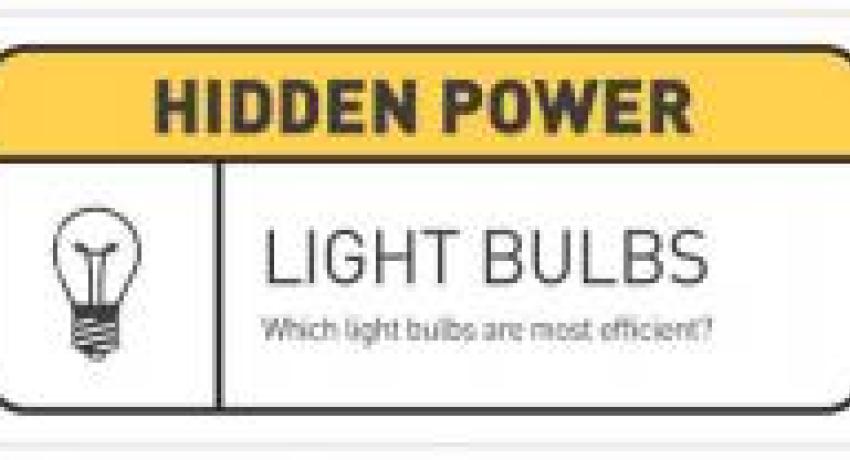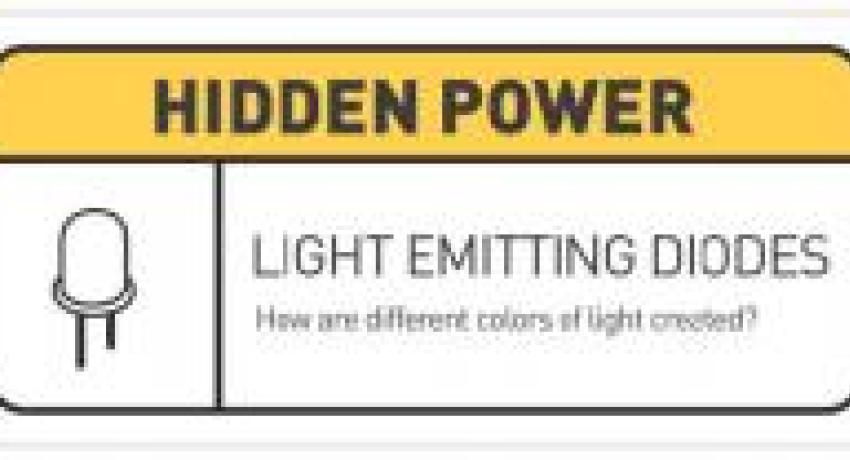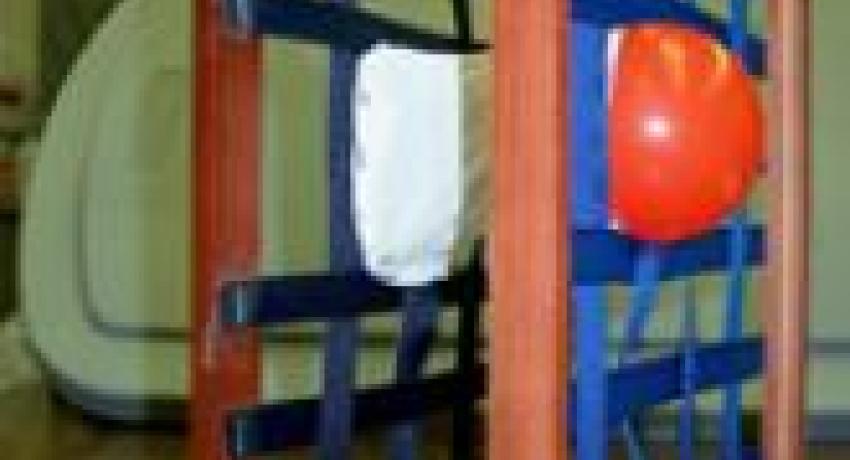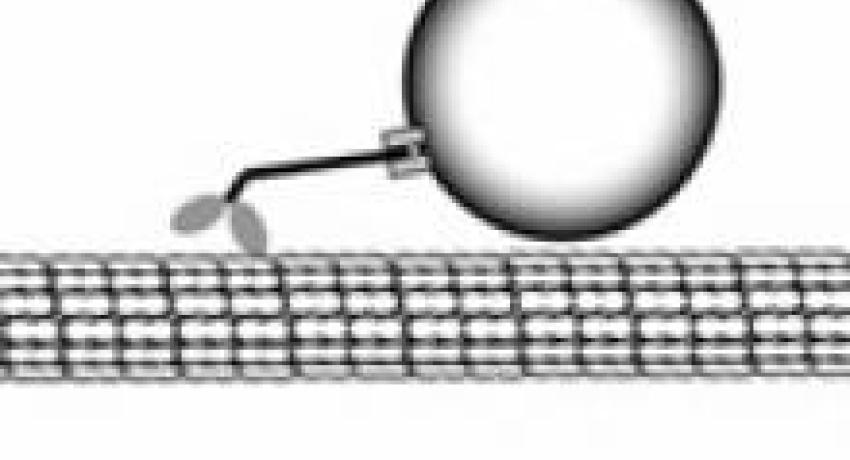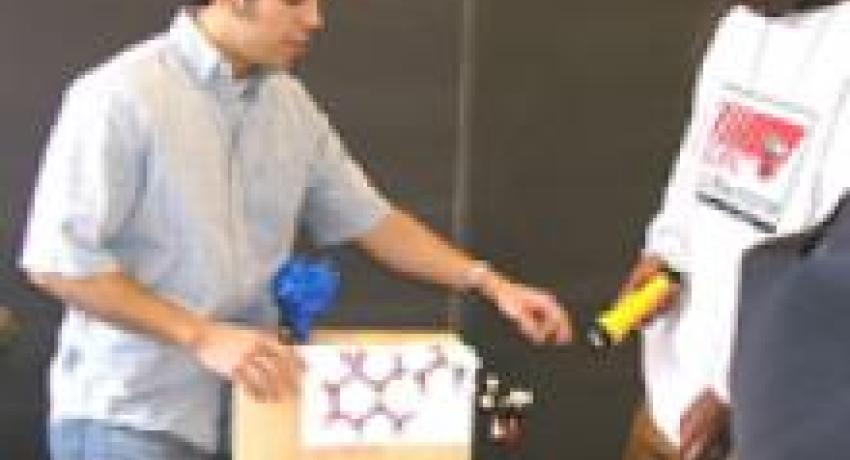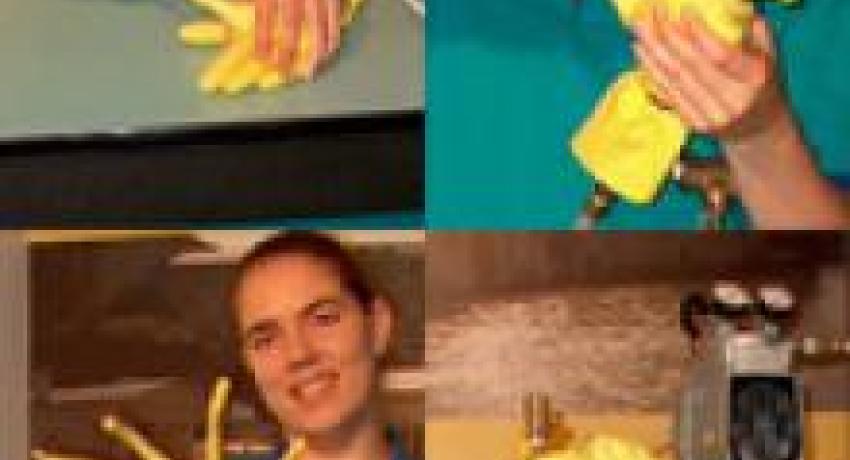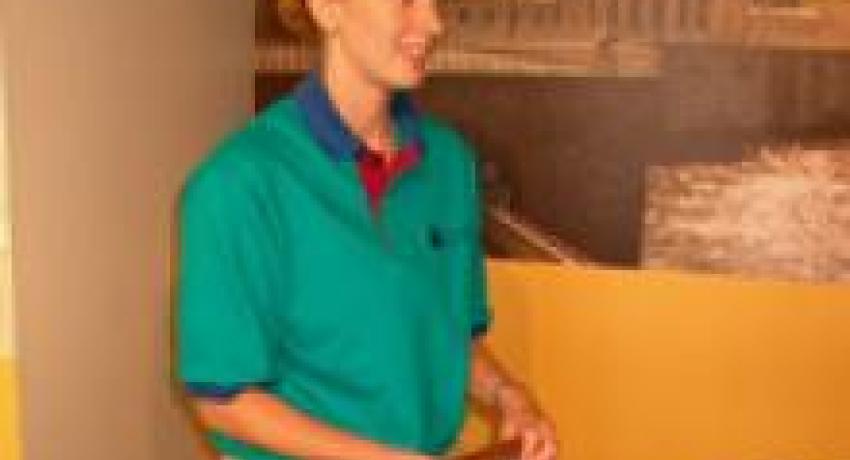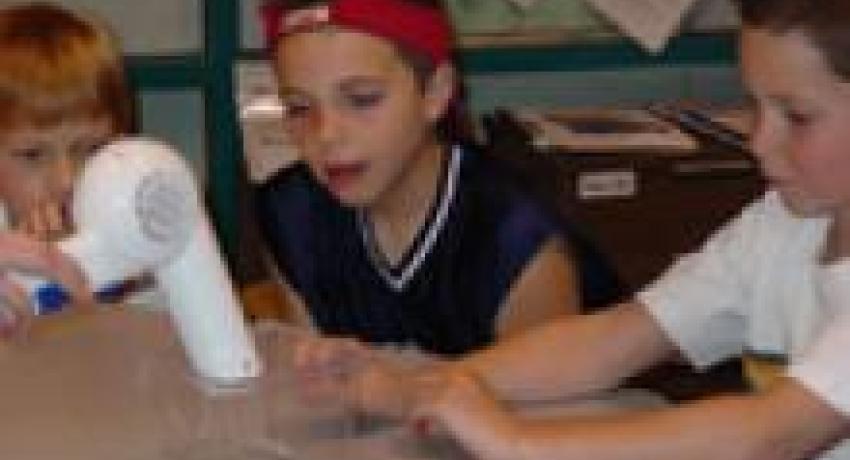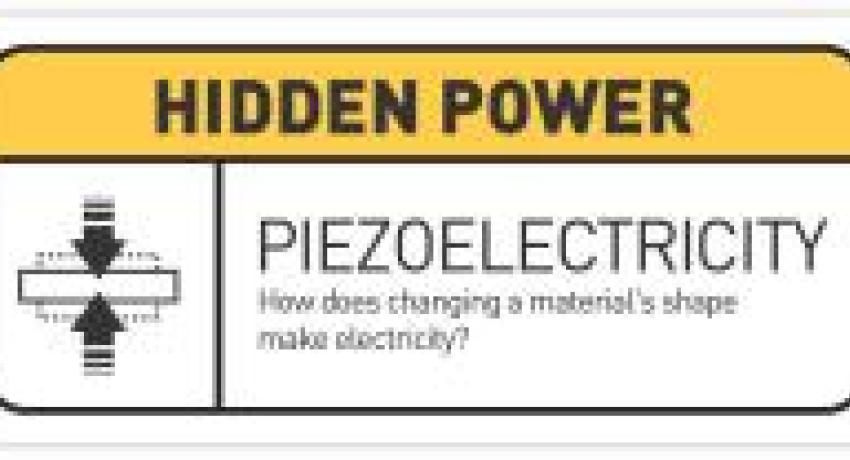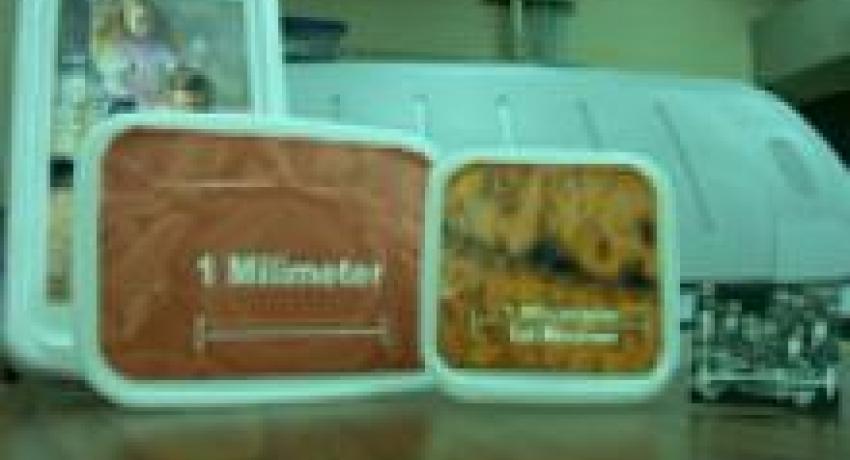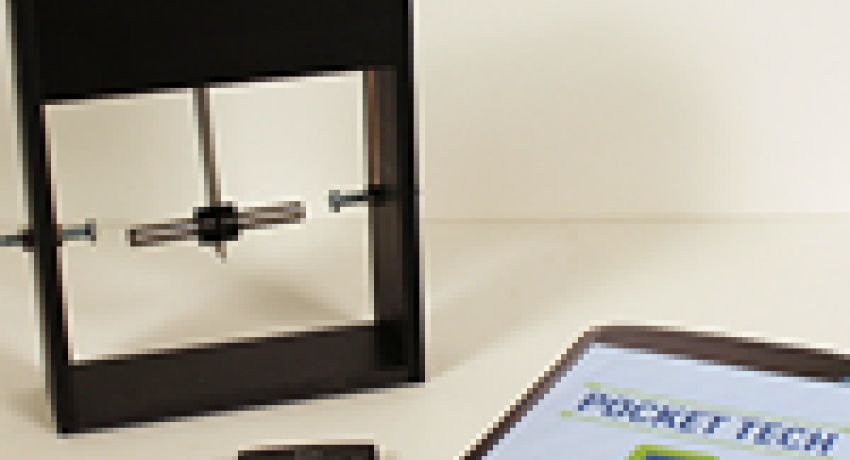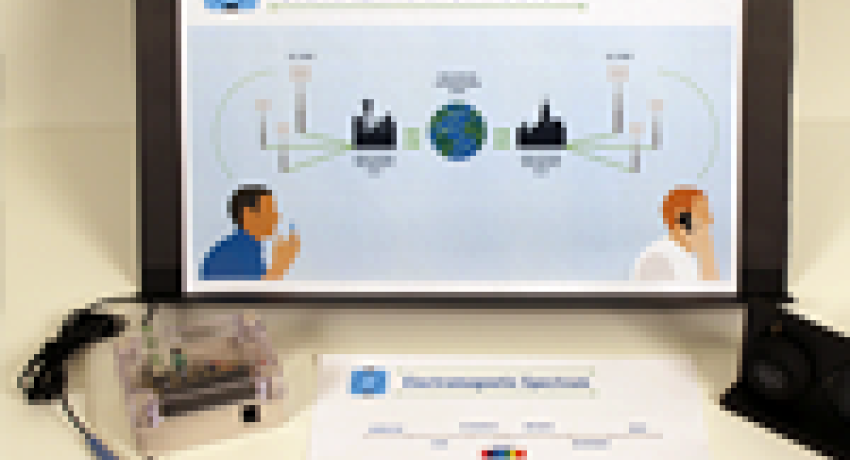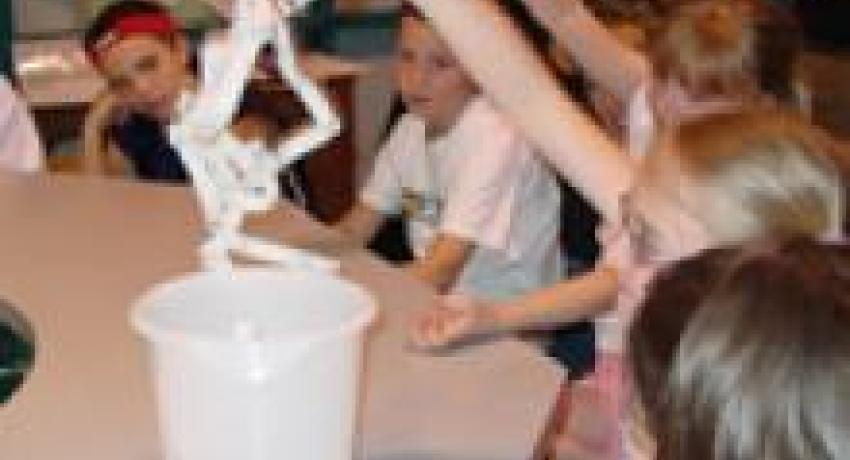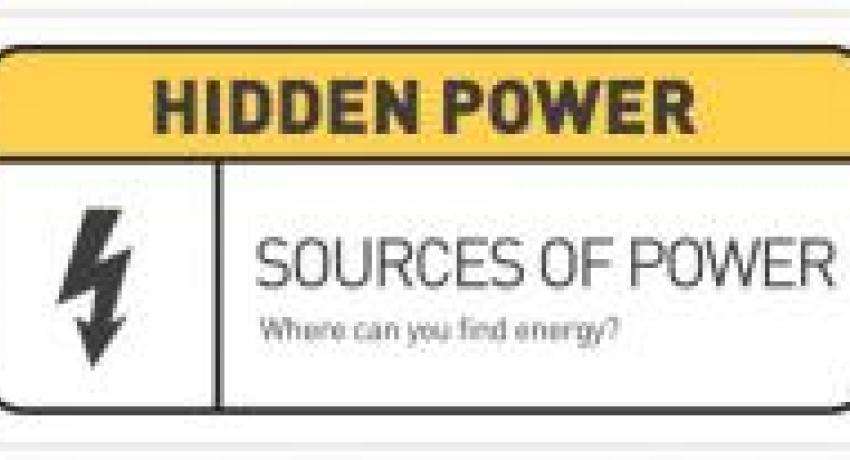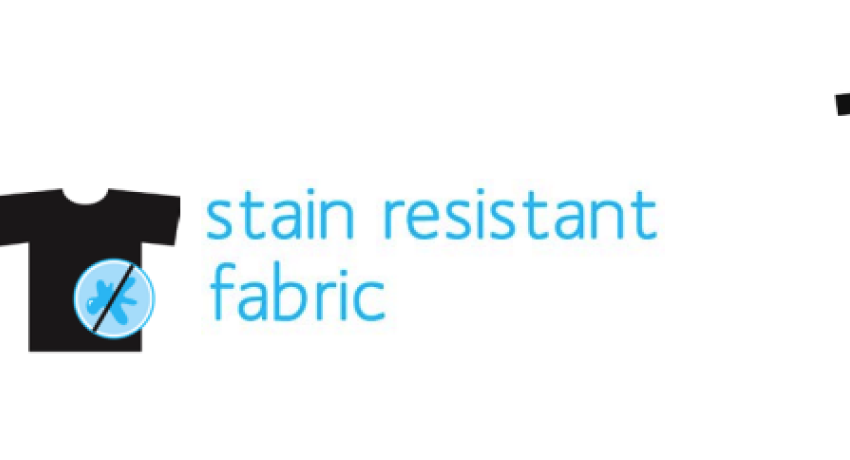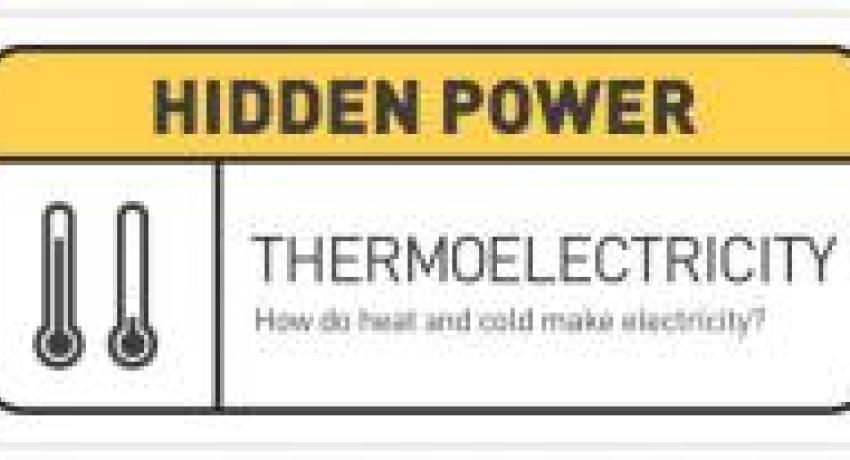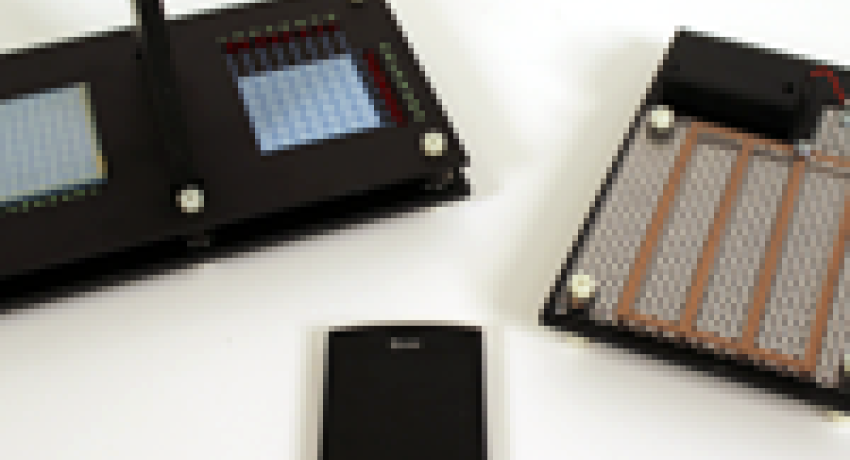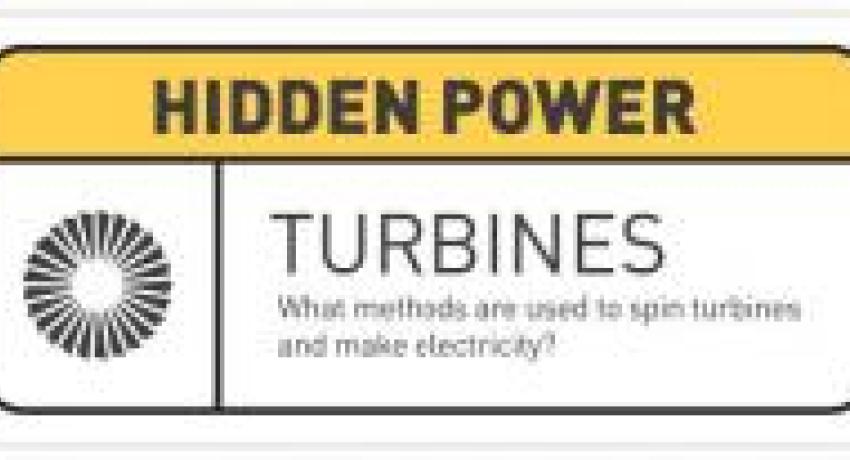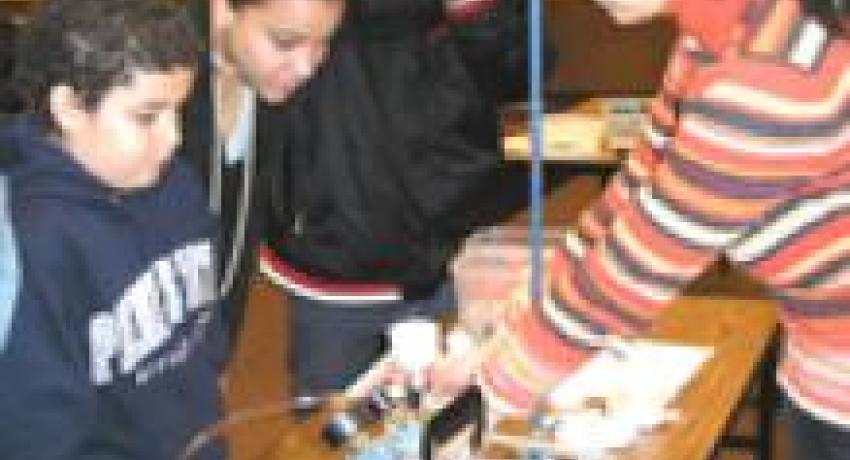The Franklin Institute, named in honor of Benjamin Franklin, is a nationally renowned science museum located in downtown Philadelphia. Students, faculty, and staff in the MRSEC have been working with the staff of The Franklin Institute to design innovative new educational resources. 20 copies of each kit have been fabricated and distributed to science museums nationwide. MRSEC researchers present the demonstrations at many outreach events and educational activities throughout the year.
Each kit includes a set of interactive activities to be presented by a docent. Each 5-10 minute demonstration emphasizes a specific scientific concept, principle, or property. Visitors are engaged by relating these concepts to examples observed in daily life. Macroscopic models illustrate and explain the phenomena occurring within materials at the micro-, nano-, or atomic-scales.
Click on one of the Museum Kit buttons below to sort by category. Enjoy!
Aerogel is the lightest and lowest-density solid known to exist. It is typically 50-99.5% air, yet can hold 500 to 4,000 times its weight in applied force!
A bubbling catalytic breakdown of hydrogen peroxide with either silver foil or powder demonstrates the power of increased surface area.
The goal of this demonstrate to visitors that antibodies help in preventing sickness by destroying antigens that enter the body.
Batteries are essential for powering all of the portable electronic devices we rely on, but what actually happens when you charge your cell phone? In this activity, hook up a simple electrochemical cell to a voltmeter to see how chemical energy can be converted to electricity.
Our eyes perceive a continuous image when we look at a screen, but in fact, images are made up of tiny points of light called pixels. Look through a lens to see the individual pixels on the screen, and then turn up the magnification to see that each pixel is composed of red, green, and blue subpixels. Play with a macro-scale model that uses a tricolor LED to represent how the color of a pixel can be tuned to any color of the rainbow.
Computers follow simple rules and inputs that build up in multiple levels to result in ultimately complex actions. Break down the process in this activity as you help a friendly character make some decisions about his day through basic truth tables and logic gates. The activity has built-in levels that can be presented as appropriate for different age and time constraints.
We communicate using complex words made up of letters, but computers only process 1s and 0s. In this activity, put simple arithmetic skills to work to translate your birthdate into binary code. Learn how this code is the basis for a complete character code used by all computers.
DNA is a short notation for Deoxyribosenucleic Acid. DNA is located in all living things. It holds all the information about who we are. DNA knows how to makes copies of itself through a process called replication.
The goal of this demonstration is to help visitors learn about self-assembly by looking at DNA.
The goal of this demonstration is to show things on a micro scale can effect what we see on a macro scale. Demonstrate that research is not just a result it's also a process.
Toxic pollutants are infiltrating our soil and ground water, but this activity demonstrates new technology that uses nanoparticles of iron to combat this problem.
The goal of this demonstration is to show how Gore-tex can allow some things through but keeps others out. Specifically letting through gases but keeping water or other liquids out.
The goal of this demonstration is to explore the properties of a cross-linked polymer. When a polymer is cross-linked, it can take on new properties, such as going from a liquid to a solid.
In this activity, visitors apply both traditional and nano-scale zinc oxide creams to paper to test the difference.
Choosing efficient light bulbs is a simple way to conserve electricity. In this activity, use your senses to compare the efficiency of different light bulbs.
The materials inside LEDs produce efficient lighting in a rainbow of colors. In this activity, experiment with different colored LEDs to discover how colors of light carry different amounts of energy.
In this activity, visitors see the amazing properties of the "Atomic Trampoline," as a metal ball continues to bounce off Liquidmetal ® long after a second ball bounced off steel has stopped.
Our bodies are made up of trillions of cells, each of these cells is like a mini factory. In order to keep each factory in working order the cells needs a security guard to protect the factory. The security guard of a cell is its cell membrane.
While most of us did not know we have motors in our bodies, they certainly play an important role. They are vital to our cells dividing and help keep the cells in good working order by moving things inside of our cells. The molecular motors activity will demonstrate how materials inside cells are transported.
A molecular switch resembles an electronic switch we use to turn on and off lights. A molecular switch is a much, much smaller (nanoscale) "device" in which one biochemical partner controls the activity of another. Vision is one of many processes in your body controlled by a molecular switch.
The goal of this demonstration is to show how very common materials can do very unusual things.
The goal of this activity is to demonstrate how things on a micro scale affect your senses (how you see in this case) on a macro scale.
In this activity, visitors tackle this problem, experimenting with LED flashlights and real nano-gold solutions to determine the optimal wavelength of light and particle size.
The goal of this demonstration is to demonstrate and explain Nitinol's shape memory properties.
Change the shape of a piezoelectric material, and you can create electricity. In this activity, test this phenomenon by shaking a polymer strip or tapping a ceramic transducer to light up a small bulb.
We look all around us at world, but what we don't know is there a whole other world that we can not see, it is called the Nanoworld. The nanoworld is made up of very very very very tiny things. In nanoworld when things are on the order of 100 nanometers or smaller. One nanometer is 1 billionth of a meter, that is really really small!!!
This activity helps to show how changing the shape of a molecule can also change its properties.
Turn your phone 90°, and your screen automatically rotates between portrait and landscape. In this short demonstration, zoom into the inside of your device with a macro-scale model of how an accelerometer senses the force of gravity.
Visitors will appreciate the magnitude of different metric scales and recognize that different tools are required to see objects at each level.
Cellular phones communicate via invisible radio waves. In this demonstration, you can literally see antennas, transmitters, and receivers at work by using the visible part of the electromagnetic spectrum. As you transmit sound across the mini-network, explore different factors that affect cellular signal transmission including signal strength, obstacles, and reflection.
The goal of this demonstration is to show properties of polymers. Polymers are made from long chains of molecules called "monomers." What the monomers are made from and how they are arranged can change the properties of the polymer.
Visitors will understand how solar cells function through a molecular model and a small-scale demonstration.
Where can we find energy? In this introductory activity, play a "seek and find" challenge to find the sources of power in a scene from everyday life.
This activity explores the properties of 100% cotton Nano-Tex ® fabric, compared to regular 100% cotton fabric.
Take a fan attached to two metal fins, put one fin in hot water and one in cold water, and soon the fan starts spinning - it's thermoelectricity in action.
How does your device know where your finger touched the screen? With a two-player, “Battleship”-style apparatus that uses a real Nintendo DS screen, discover the invisible grid embedded inside every touch screen that maps the coordinates of your input. Then, learn how the DS touch screen actually works through a macro-scale model and explore the pros and cons of different screen technologies.
The goal of this demonstration is to show how a zeolite can work as a "cage" to trap certain molecules selectively.


